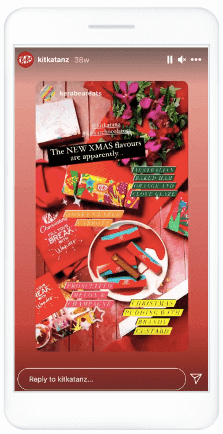Inspiring examples of retail advertising
Retail marketing aims to make the products and services offered for sales attractive for consumers. In our latest blog post, we summarise what you need to know about retail marketing and provide you with some inspiring examples!
What is retail marketing?
The essence of retail marketing is that retailers promote the brands and products they offer, encouraging customers to buy them. Retailing can take place in the online space, but also in the physical reality of stores. In fact, we can also distinguish between retailers selling their own products and those of other customers. For example, there are online shops that offer products from several brands, such as Amazon, there are shops and online stores where the owner offers his own goods, and there are also hybrid solutions where there are own-brand and partner products.
The pillars
The basic pillars of retail marketing can be well described by the well-known 4Ps of marketing terminology, which form the basis of the advertising strategy: product, price, promotion, place.
The product or service is the object of marketing, it is what all actions are taken to sell. In the modern marketing approach, although the aim is to sell, it is equally important, and even more important at the communication level, to ensure that the customer experience is impeccable, that the consumer has access to valuable, personalised, useful content, in addition to a summary of the benefits of the product. It is this satisfaction that will drive the purchase.
The second factor is price. Sales are significantly influenced by price, which in itself can position the product. It is a powerful filter to express the target group you want to reach. This is only one aspect, of course, as price is fundamentally determined by factors such as production and competition.
Promotion is about raising awareness of the product, i.e. how the relevant audience learns about the existence of the product and its benefits. The range of tools is quite wide, it is worth choosing according to the type of product and the preferences of the target audience.
The location refers to where customers can find the product, where they can buy it. It can be online, it can be through social media, it can be a shop, and it is also very popular to have multiple ways of accessing the product, for example, buying it in the shop and in the webshop.
Examples of retail advertising
There are many good practices in retail that are worth trying out. We've provided some inspiring examples of retail advertising that can be used to increase retail sales.
Get social media involved!
Social media is now an integral part of our lives. It's also a handy platform for retailers to reach their audience, although it's not as easy today as it was a decade ago. However, there is no doubt that consumers like to browse products on these platforms, so it makes sense to create 'shoppable' content that features specific products.
In fact, it is now increasingly popular for traders to encourage you to buy during live broadcasts. For example, KitKat has enabled consumers to place their orders via a Facebook Live.
Your brand should also have a mission
Whereas the guideline used to be that the brand had to have a story that people could identify with, today the emphasis is much more on having a mission, a cause that is important to the consumer, that has social relevance. There's a growing awareness in consumption, especially among the rising generation, and that's something to tap into.
That's what IKEA has done, for example, who have softened the blow of accusations of environmental damage by creating a buy-back and resale service that promotes recycling.
E-mail marketing
Many people think that the time for newsletters is over, but in fact a good newsletter will always be good. The most important guiding principle is that your newsletter should be relevant and useful, so you won't want to unsubscribe.
In-store and outdoor retail advertising
Both are offline advertising, but the fact is that each type can be digital or analogue. These platforms should be used for short, to-the-point messages, with striking visuals and images.
The classic solution for retail marketing is the distribution of printed products, such as leaflets and catalogues. Here, the retailer has two options: either to publish a catalogue or print a leaflet itself, or to include it in a magazine relevant to its target audience as a PR campaign. Either way, it's all about creativity, which is now the only way to achieve the expected impact.
Online advertising
The range of online advertising techniques is very colourful, think of social media advertising, Google ads, etc. The online advertising scene is also strengthened by retail media advertising. The idea is that brands can buy the advertising space offered by retailers and get "close" to consumers by reaching them with personalised messages at a time when they are ready to buy. Not to mention the fact that brands can access important data that can be used to improve their advertising. Learn more about Inhabitad's solution!
E-catalogs
E-catalogs are a powerful retail marketing technique, offering digital versions of print catalogs for engaging and interactive product showcases. They can be easily distributed through email, websites, and social media, reaching a wider audience instantly. E-catalogs provide an immersive experience, enabling customers to browse, zoom, watch videos, and make purchases directly. Personalization based on customer preferences enhances the shopping experience and increases conversion rates. Additionally, e-catalogs offer valuable analytics, cost-effectiveness, eco-friendliness, and cross-platform accessibility, making them a dynamic and effective tool for driving sales in the retail industry.
Results above all
It is particularly important for brands to be able to measure the tools they use in retail advertising. For this reason, techniques that provide accurate analytics and direct response strategies to track shoppers, such as promotional codes and coupons, are increasingly popular. These will show where the user has come from.



